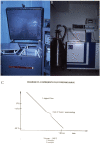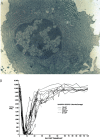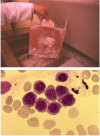History and Development of Autologous Stem Cell Transplantation for Acute Myeloid Leukemia
- PMID: 34820613
- PMCID: PMC8486970
- DOI: 10.2991/chi.k.210703.002
History and Development of Autologous Stem Cell Transplantation for Acute Myeloid Leukemia
Abstract
This review describes the development of cryopreservation, the birth of autologous stem cell transplantation (ASCT) and its past and present use to consolidate adult patients with acute myelogenous leukemia (AML). It summarizes the first autografts in patients in relapse, the experience of autografting in complete remission (CR), using bone marrow unpurged or purged in vitro with cyclophosphamide-derivatives, and the important shift to peripheral blood stem cells. The review also discusses the results of recent studies in favor of the use of ASCT to consolidate good- and intermediate-risk patients who reach CR with no detectable minimal residual disease, and those which support the inclusion of maintenance therapy post autograft with hypomethylating agents, anti-BCL-2, and, possibly, in the future, anti AML chimeric antigen receptor-T cells. Carefully applied to well-selected patients, ASCT may regain interest, because of its simplicity, its reduced toxicity, lower non-relapse mortality and better quality of life.
Keywords: Autologous stem cell transplantation; acute myelogenous leukemia; cryopreservation; history; review.
© 2021 International Academy for Clinical Hematology. Publishing services by Atlantis Press International B.V.
Conflict of interest statement
The author declares no conflicts of interest.
Figures




References
-
- Barnes DW, Loutit JF. The radiation recovery factor: preservation by the Polge-Smith-Parkes technique. J Natl Cancer Inst. 1955;15:901–5. https://pubmed.ncbi.nlm.nih.gov/13233934/ - PubMed
-
- Porter KA, Murray JE. Successful homotransplantation of rabbit bone marrow after preservation in glycerol at –70°C. Cancer Res. 1958;18:117.
Publication types
LinkOut - more resources
Full Text Sources
Miscellaneous

